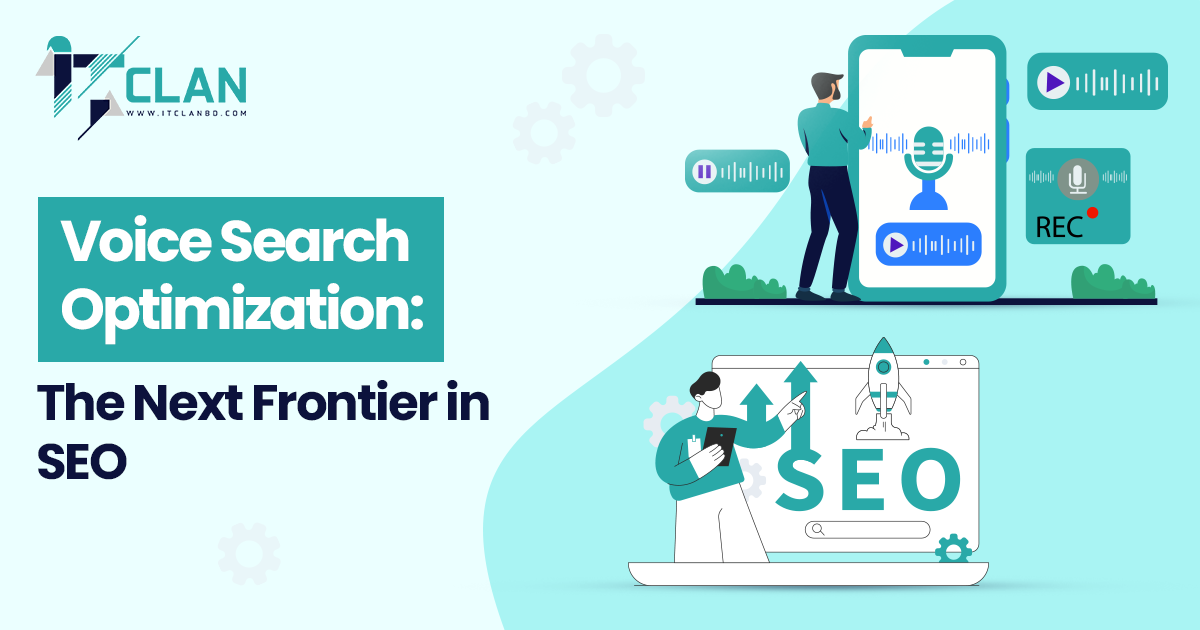
Our Blog Details
Home / Our Blog DetailsThink about your favorite brand for a second. What pops into your mind first? Is it their logo? Their colors? What does their website or social media posts look like?
That’s the power of graphic design.
In today’s digital world, where people make snap decisions in seconds, your brand’s visual identity plays a massive role in how customers perceive and remember you. And that’s where graphic design becomes your brand’s silent but powerful ambassador.
Let’s break it all down and explore why graphic design is crucial for building a strong brand identity, how it shapes your business perception, and what it really means for long-term success.
What is Graphic Design?
Let’s start with the basics.
Graphic design is the art and practice of creating visual content to communicate messages. It combines images, text, colors, typography, and layout to effectively deliver a specific message or emotion. Graphic designers use tools like Adobe Photoshop, Illustrator, or Canva to design everything from logos, posters, and packaging to websites, social media graphics, and advertisements.
In short, graphic design helps brands visually connect with their audience, build identity, and make information more engaging and easy to understand.
What is Brand Identity?
A brand identity is the visual and emotional face of your business. It’s how you speak, what you stand for, and how you look—all rolled into one package. Think of it as your brand’s personality:
- Mission & Values: What you believe in
- Voice & Tone: How you talk to customers
- Visuals: Logos, colors, fonts, images
Great graphic design weaves these pieces into a story that feels cohesive and true. Imagine about Apple, Coca-Cola, and KFC; their logo, color theme, and font represent their brands worldwide. That’s how simple graphic design improves brand recognition to everyone. Think Coca-Cola changes its color or logo every week or doesn’t have a logo or color theme, so how would people know about this brand?
They will forget right! So brand design is mandatory.
Want to drive more traffic? Learn how to boost your SEO rankings effectively.
Why Graphic Design Is a Key Element of Brand Identity
Here’s exactly how graphic design supports and strengthens your brand identity:
1. Creates Visual Consistency Across All Platforms
From your website to your Instagram feed, your audience should be able to recognize your brand instantly. Graphic design helps maintain:
- A uniform color scheme
- Consistent font styles
- Repeated visual elements
- Balanced layouts
This visual harmony builds brand recognition—a huge advantage in a noisy digital world. Create templates for social posts, presentations, email headers, and print flyers. This keeps your team on-brand and saves hours on design work.
Also, want to see how consistent visuals boosts conversions? Check out How UI/UX Design Impacts Website Conversion Rates for tips on creating a seamless user experience.
2. Builds Trust and Professionalism
People trust what looks polished.
- Recall: We remember shapes and colors faster than words.
- Authority: Professional design signals quality.
- Loyalty: A unified look makes you feel reliable and familiar.
A well-designed brand identity builds trust, tells your audience you care about your business and your customers. It gives off the vibe that you’re credible, organized, and serious; whether you’re a startup or an established brand.
3. Communicates Your Brand Message Without Words
Good design speaks volumes.
Let’s say you’re a luxury skincare brand. Clean lines, soft colors, and elegant fonts instantly convey sophistication. On the other hand, a bold tech company might use sharp edges, strong typography, and vibrant colors to show innovation and energy.
Graphic design lets you communicate your brand’s personality and values visually, even before someone reads a single word.
4. Building Emotional Connections
Great graphic design isn’t just about looking good. It’s about making people feel something. Colors, images, and typography can stir emotions that reflect your brand’s personality and values. For instance, blue feels trust and calmness (used at banks), while red sparks excitement and passion, just like Coca-Cola.
Color psychology plays a huge role. A children’s toy brand might use bold, cheerful colors to spark joy and energy, while a luxury spa may lean into soft, soothing pastels that instantly signal relaxation. The right visual choices can make your audience feel like your brand truly “gets” them.Quick Example: Starbucks uses earthy green tones to feel warm, welcoming, and eco-conscious which perfectly matches their cozy, community-driven brand.
How Graphic Design Build Your Brand Identity?
Let’s zoom into the most important graphic design elements that help build a strong brand identity:
1. Logo Design
Your logo is your brand’s face. It should be:
- Unique
- Scalable
- Simple yet meaningful
- Memorable
A well-designed logo sticks in people’s minds and often becomes the cornerstone of your entire visual identity.
2. Typography
Fonts carry tone. Are you playful, professional, quirky, or minimalist? Your chosen typefaces should reflect your brand’s tone and remain consistent across all materials from website headers to print flyers.
3. Color Palette
Colors evoke emotion. Blue builds trust, red energizes, green soothes. Your brand’s color scheme should:
- Reflect your message
- Work well across media
- Stay consistent
Having a color palette guide helps keep things uniform and recognizable. Fun Fact: Studies show that 80% of brand recognition comes from color alone. That’s why McDonald’s golden arches are always, well, golden.
4. Imagery and Icons
From illustrations to photography and custom icons, the style of imagery you use tells people a lot about your brand. Are your visuals sharp and modern or warm and vintage? Consistent photos and icons build a recognizable look:
- Photography style: Bright and airy? Dark and moody? Pick one vibe.
- Illustration style: Flat icons, hand-drawn sketches, or 3D renders? Stick to one.
- Icons: Use a single icon set so everything feels unified.
Graphic design ensures that all images align with your overall look and feel.
5. Layout and Spacing
Clean, easy-to-navigate layouts improve readability and visual appeal. Whether it’s a social post, a product label, or your homepage. Remember, good design makes content easier to consume.
Avoid common pitfalls in your online store! Learn more in our guide on the Top 5 E-commerce Development Mistakes to Avoid in 2025.
How Graphic Design Fuels Your Business Growth
Graphic design does more than just make things look pretty. It directly supports your marketing and sales goals:
1. Boosts Brand Recall
People are more likely to remember visual content than plain text. When your designs are distinctive and consistent, your brand becomes easier to recognize and recall.
2. Improves User Experience (UX)
Design influences how users interact with your website, app, or store. A clear visual hierarchy, intuitive icons, and readable text all contribute to smoother navigation and better engagement.
3. Drives Conversions
Call-to-action buttons, landing pages, product packaging, all of these benefit from strategic design. A great layout with eye-catching elements can lead to more sign-ups, sales, or downloads.
4. Supports Content Marketing
Infographics, blog headers, downloadable guides—all rely on design to grab attention and convey information clearly. Visual content gets more shares and saves on platforms like Pinterest and LinkedIn.
Ensure your website grows with your business! Discover how in our guide on The Role of Web Development in Building a Scalable Business.
Essential Tools & Resources for Graphic Design
Equip yourself with these design powerhouses:
- Adobe Creative Cloud: Industry-standard for logos, layouts, and vector art.
- Figma: Real-time collaboration on interface and web design.
- Canva: User-friendly templates for quick social graphics.
- Unsplash & Pexels: Free, high-quality stock photos.
- The Noun Project: Vast library of icons for any topic.
Don’t forget online courses (Skillshare, Udemy) and design blogs (Smashing Magazine, Creative Bloq) to keep sharpening your skills.
Common Brand Design Mistakes to Avoid
- Inconsistency
Using different logos, fonts, or colors across platforms weakens brand recognition. Stay consistent. - Overcomplicating Design
Too many elements confuse people. Keep it clean, simple, and memorable. - Ignoring Your Audience
Trendy isn’t always right. Design with your target audience in mind. - Not Mobile-Friendly
Make sure your visuals work on all screen sizes—especially mobile. - Bad Font Choices
Hard-to-read or off-brand fonts hurt your image. Stick to clear, consistent typography. - Skipping Professionals
DIY tools can only go so far. A pro designer ensures quality and polish.
These small design missteps can lead to a weak brand presence—avoid them to keep your identity strong and effective!
Best Tips to Level Up Your Brand Design
Ready to level up your brand with graphic design? Here’s how to make it happen:
- Hire a Pro: A professional designer can create a cohesive look that aligns with your goals. Platforms like Upwork or Fiverr are great places to find talent.
- Create a Style Guide: This keeps your visuals consistent across all platforms. Include your logo, colors, fonts, and image guidelines.
- Stay Consistent: Use the same visuals everywhere including website, social media, packaging, you name it.
- Balance Trends and Timelessness: Follow design trends to stay fresh, but don’t sacrifice your brand’s core identity for something too trendy.
- Test and Tweak: Ask for feedback from customers or peers to see if your design resonates. Don’t be afraid to make small updates.
Also, we share some essential tips after you build your site and get scalable business growth.
How ITclan BD Can Help Strengthen Your Visual Identity
If you’re serious about building a brand that stands out, it’s time to think beyond DIY tools and free templates.
At ITclan BD, we specialize in creating custom visuals that align with your business goals and speak your brand’s unique language. Our graphic design services cover everything from:
- Logo design
- Branding kits
- Social media templates
- Marketing materials
- Web UI/UX design
- And more
Whether you’re starting from scratch or need a visual refresh, ITclan BD ensures your brand looks polished, professional, and unforgettable. Need help? Check out our graphic design service and branding services to start building a visual identity your customers will love and remember.
Final Thoughts
Graphic design is more than just decoration. It’s a key part of your brand identity that affects how people see, feel, and remember your business.
Strong, consistent design builds trust, makes communication clearer, and helps you stand out from the crowd. Whether you’re a small business or a growing e-commerce brand, investing in high-quality graphic design can make all the difference.
Remember: your brand identity starts with how it looks, but grows through how it makes people feel. Make your first impression count.
Frequently Asked Questions
Graphic design shapes how people see and remember your brand. It creates a consistent visual style—like logos, colors, and fonts—that reflects your brand’s personality and builds recognition across all platforms.
It helps small businesses look credible, professional, and stand out—even on a tight budget.
The 7 elements of graphic design are line, shape, color, texture, space, form, and value. These are the building blocks of any visual design. Designers use them to create balance, contrast, focus, and emotion in their work—guiding the viewer’s eye and reinforcing the message or mood behind the design.
To create graphic elements for a brand, start by defining your brand’s personality and target audience. Then design a logo, choose a color palette, select matching fonts, and create supporting visuals like icons or patterns. Use tools like Adobe Illustrator or Canva, and keep everything consistent by following a clear style guide.
Yes! Visually appealing websites, ads, and packaging influence buying decisions and build trust—leading to higher conversions.
Recent Blog Post
Quality Is Our Strength

Voice Search Optimization: The Next Frontier in SEO...
Have you ever asked Google Assistant to “find the best restaurant near me”? Or did you tell Siri to “play relaxing music”?If yes, then you’ve already used voice search, which is o...

How Cloud-Based DevOps Solutions Are Transforming IT Operati...
The technology is upgrading fast, as well as, businesses can’t afford to wait weeks or months for software updates. Customers expect smooth experiences, fast features, and quick fixes whe...

The Benefits of Continuous Integration and Continuous Deploy...
Right now, software development is no longer about releasing updates once in a blue moon. Users expect frequent updates, faster features, and bug-free experiences. This is where Continuous ...

